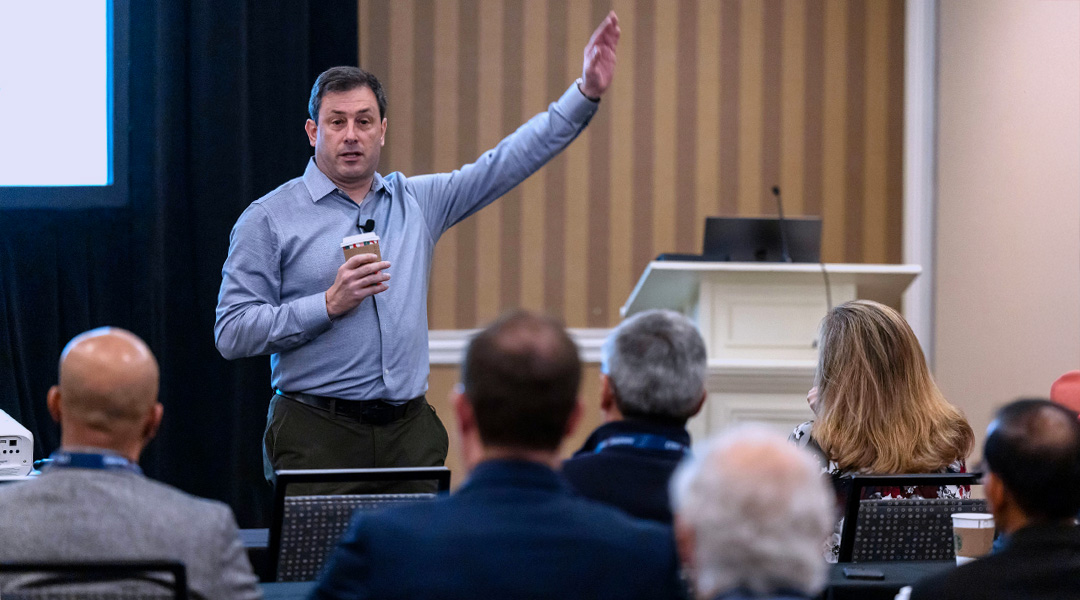I had a conversation last week with someone who wanted to blow up his company’s current technology systems and start over. And it reminded me of other clients and experiences where company ownership or management had to lead through similar daring changes.
In this case, the desire to blow things up isn’t as impulsive as it sounds. Slow, outdated, heavily patched systems are a burden for the staff and affect the company’s competitiveness. In a situation like that, a leader needs to step up.
Leadership Considerations
What that company faces now is comprehensive change. If you’re leading a business through a major shift – especially the kind that affects how your team works day-to-day, you probably know that the hardest part isn’t the change itself. It’s keeping your people steady and productive while everything around them is in transition.
While bold moves can drive growth, they also carry risk, and much of the risk lies in how your team accepts and adjusts to change. That’s because it’s human nature to resist change.
Throughout a “change everything” project, you’ll find points where people’s insecurities, fears, or suspicion start to rise. There’s the buy-in (or not) stage. Transition weeks when productivity dips. Friction points with other departments or customers. Confusion about who should do what.
This is where I’ve seen leaders lose hold of the reins on their ambitious plans. Why? Because armed with a good plan they’ve carefully crafted, leaders are often surprised to learn that the path forward can be anything but smooth.
Leadership First, Tools Second
In the case I noted earlier, everyone will ultimately benefit from newer, faster gear and all their data reorganized in a way that makes sense. But getting there is a challenge. It’s a lot of change to absorb – in fact, it’s similar to changing jobs, but it involves people who never intended to do that.
So for leaders, that’s where the real work begins, because big transformations aren’t as much about machines as they are about habits, routines, workflows, comfort zones, expectations, and resistance to change.
Managing those human factors is the real leadership challenge. If that challenge is not successfully met, mistrust and lack of confidence arise, and from there it’s a short trip to low morale and maybe even “quiet quitting” or employee turnover.
In my experience, the best leaders avoid these negative consequences by communicating frequently and transparently.
The bolder the project, the more important it is for leaders to be open, honest, approachable, and present throughout the project. Times of transition benefit from MBWA – what used to be called “management by walking around.” That principle still matters today, whether you’re walking a factory floor or dropping into Slack threads.
The point is, during significant transitions, leaders must engage daily with the staff to answer questions, listen to whatever the workers have to say, and spread confidence in the project and its progress.
With that as background, here are my guidelines for leading a bold change, based on my experience and my observations of clients and their companies over the years.
- A Clean Slate Isn’t Actually Clean
I used to think “starting fresh” sounded like a clean break. Efficient. Empowering. Maybe even fun.
What I’ve learned (and what I remind clients of) is this: no matter how much new technology or software you install, you’re still bringing along old baggage, such as:
- Ingrained habits and shortcuts
- Unspoken fears
- Process workarounds that are no longer appropriate or won’t scale
- Allegiance to “how we’ve always done it”
Leaders can address all these areas in advance and throughout the installation and early operating days of any new system or change. Regular, clear communication and direct employee involvement are key. Otherwise, you invite a leadership gap that erodes employee confidence in the company.
- Your Team Might Not Be as Excited as You Are
I’ve made this mistake myself, getting pumped about a new system and expecting everyone else to share my enthusiasm.
It helps to remember that people don’t resist change because they hate innovation. They resist it because they feel:
- Unprepared
- Unheard
- Excluded from plans and out of the loop on progress
- Afraid of looking incompetent or obsolete
When one of our clients (or someone in a peer advisory group) anticipates a major change, I encourage them to:
- Share the “why” behind the transition in terms that make sense to the team. Provide context so everyone understands the need for big change in terms that matter to them.
- Involve people early, especially before the plan is final.
- Ask for feedback from everyone so they feel part of the process, not victims of it.
Importantly, leaders need to pay attention to the “what’s in it for me?” factor. Often when performing a new process, an employee may feel uncomfortable with it, work harder than before, or even produce results more slowly because the work is cumbersome. All the gains are for the company, but not for the employee… all they get is the pain. Leaders need to find ways to mitigate this if they want to retain their staff and the goodwill of those in the company.
The sooner your people feel trusted and included, the faster they’ll adapt and even lead parts of the transition themselves.
Sidebar: What a Kitchen Renovation Taught Me About Change
I’ll never forget the time we did a full kitchen renovation. On paper, it looked amazing — new layout, better workflow, modern everything. I was excited.
Then the work began.
For over a month, we were making family meals without a sink, stove, or fridge. We were basically living like vagrants in our own home.
Our contractor did great work — technically. But what he didn’t do was prepare us for the level of disruption we would face or the emotional impact that would have so we could align our expectations with reality. For example, we thought “new appliances — great!” but the reality was more than three weeks with no appliances.
That gap between insufficient communication and expectations stuck with me.
So now, whenever I’m leading a big change, I try to remember how unsettling it can be when something simple disappears or becomes frustratingly impractical.
- Anticipate the Unexpected
One of the most important parts of any good plan is this:
Plan for things not to go according to plan.
No change rolls out perfectly. There are always surprises — systems that don’t play nicely together, processes that unravel, and decisions that looked smart on Monday but cause unintended consequences by Friday.
I’ve learned to build this reality into the timeline and budget. A little flexibility upfront can prevent a lot of disruption and scrambling later.
Just as important: involve your team in shaping the outcome as it unfolds. Invite their feedback. Adjust course openly. Let them help solve the problems you didn’t see coming.
When people feel like they have some control (instead of just being dragged along), they stay more engaged. They also have a clearer, more realistic view of what success looks like.
- Expect a Productivity Dip
Let’s be real: you can’t undertake a major transition (like replacing all your systems) without slowing down somewhere.
I’ve learned to prepare teams for a dip in speed and confidence. It doesn’t mean the project is off track — it means everyone is human.
When I help a business through big changes (and even some smaller ones), I encourage leaders to:
- Build in buffer time and flexibility
- Set expectations with both the team and the customers
- Remind everyone (yourself included) that a few glitches are the price of progress. Avoid focusing on blame.
One of the biggest mistakes I see? Putting the most stressed-out person in charge of the transition. That’s a recipe for burnout. Whoever is leading the change needs room to lead — not just another huge project dumped on their already-full plate.
- Don’t Let Customers Feel the Turbulence
Your customers shouldn’t have to ride the rollercoaster with you.
That means:
- Keeping outward-facing systems stable during the transition.
- Being transparent if a delay or hiccup might affect them.
- Protecting the tone, responsiveness, and brand consistency they’ve come to expect.
Behind the scenes, you might be holding the business together with printed spreadsheets, stubbornness, and duct tape. But what the client sees should still feel solid and on brand.
- Take Time to Reflect, Not Just React
In the middle of change, it’s easy to focus on just surviving the day. But leadership means stepping back and asking: How is this actually going?
Too often, I find leaders ask that question and then answer it themselves. That’s not good data because the answer has to come from the troops.
For this reason, I try to build in checkpoints, even if they’re informal, to assess the situation every few days:
- What’s working well?
- Who’s struggling?
- What adjustments need to be made now (before they become bigger problems)?
Sometimes those answers come from metrics. Sometimes they come from a 10-minute chat with a team member who’s quietly been holding it together.
I’ve found that regularly asking the team questions will reveal the most important insights – but only if I pause to reflect on what they’ve said before taking the next set of actions.
Final Thoughts
It’s easy to underestimate what’s demanded of a leader in times of bold change. The initial decision itself might take courage, but the implementation takes something different: consistency, empathy, persistence, and the patience to manage a little chaos.
When you lead from that place – eyes wide open and people-first instincts – the change sticks. Not just technically, but culturally.
So yes, when it’s warranted, go bold. Rebuild. Reimagine.
And when you do, lead it like it matters. Because it does.
Pictured: Me, leading a seminar for business owners on growth and change.




